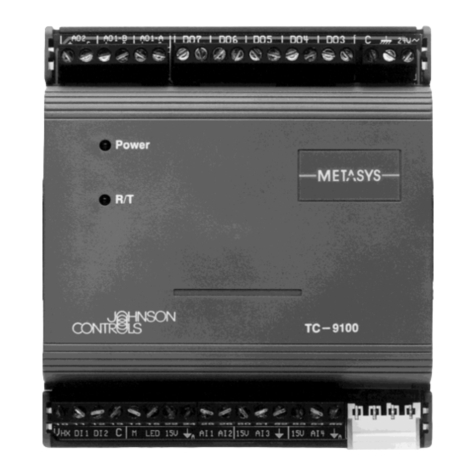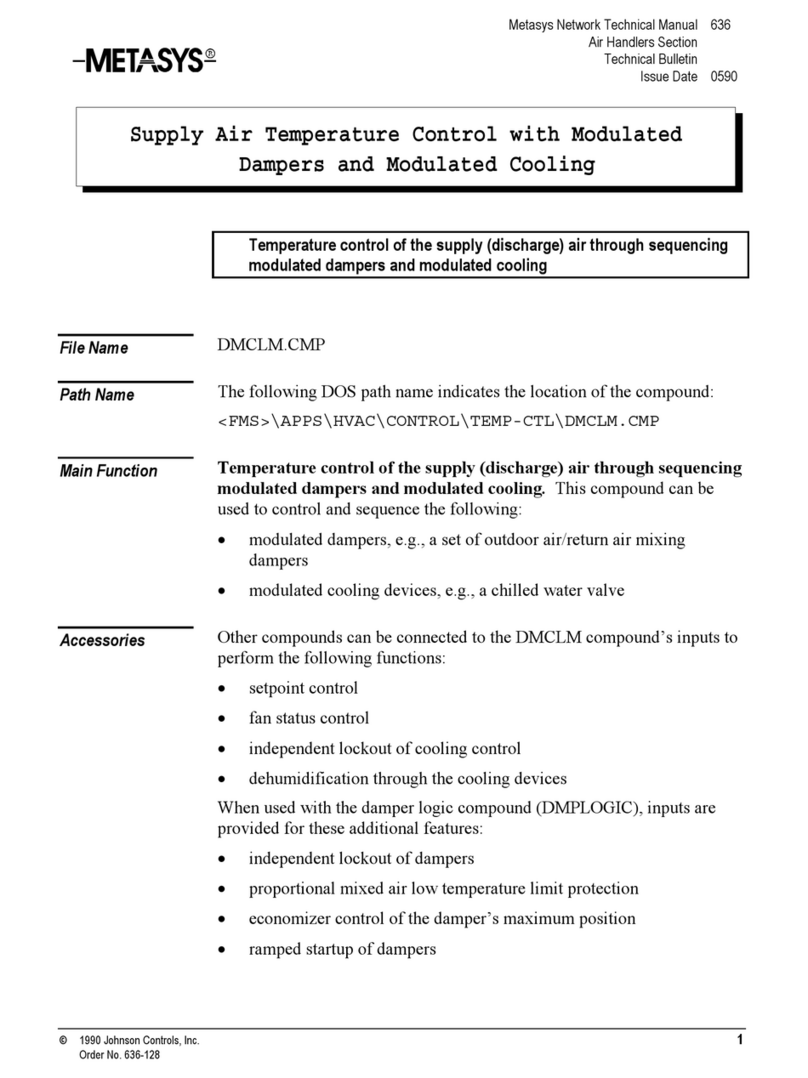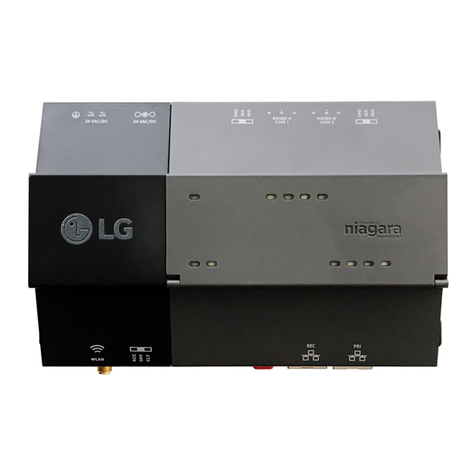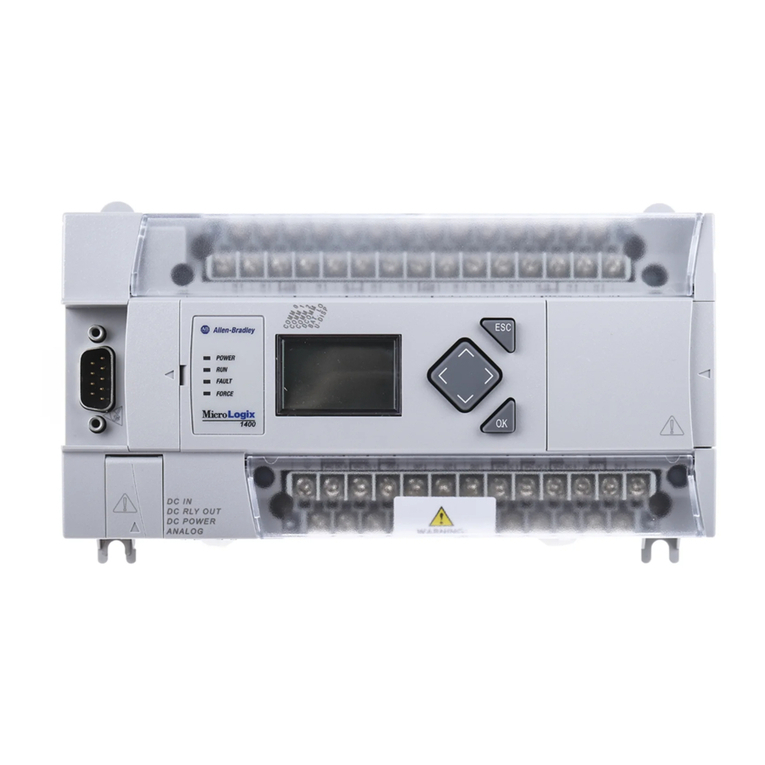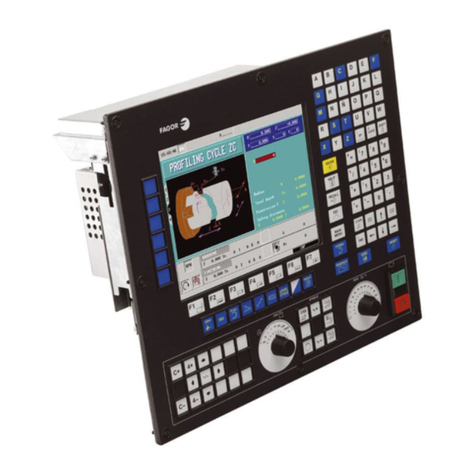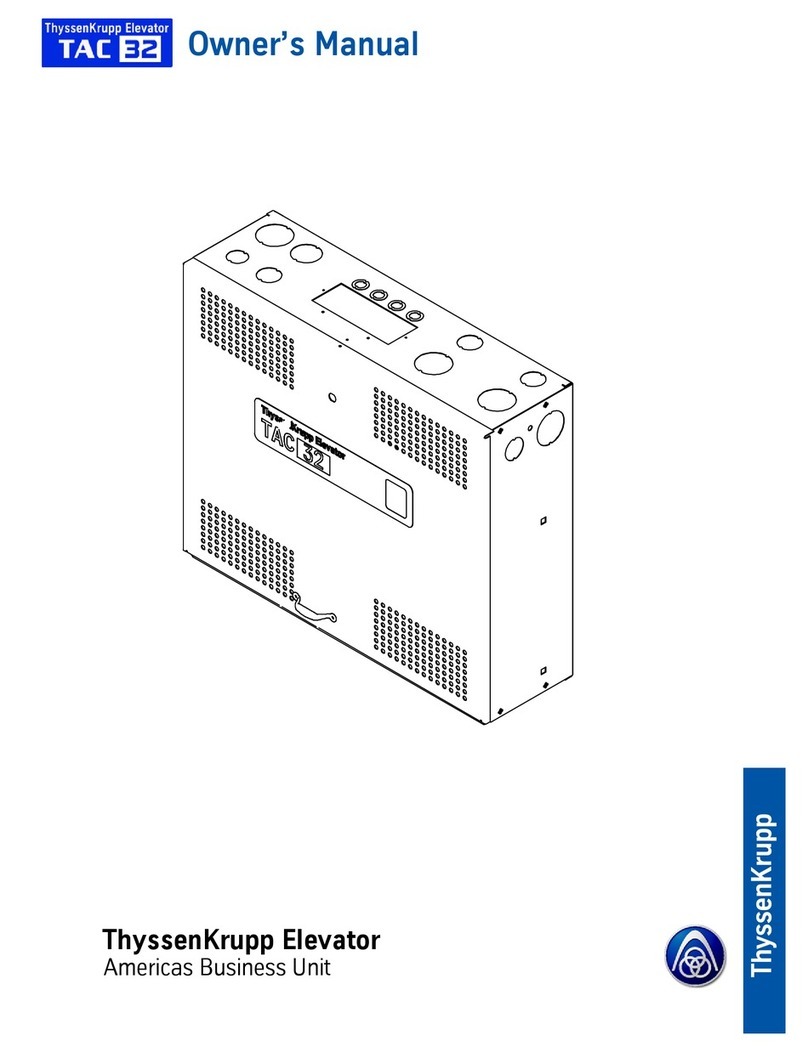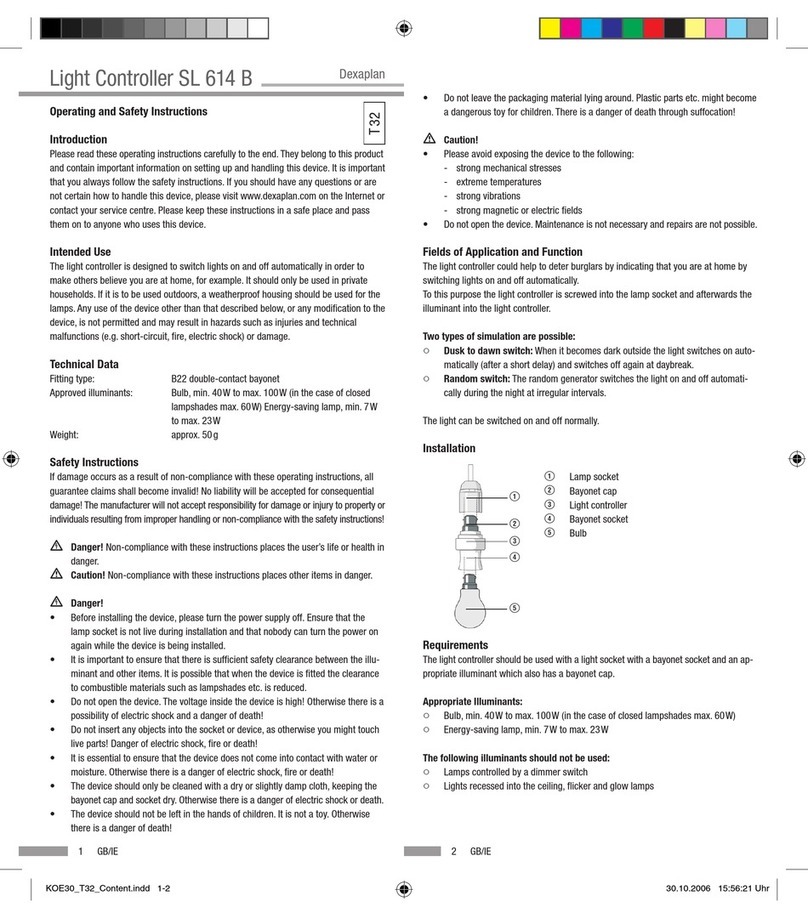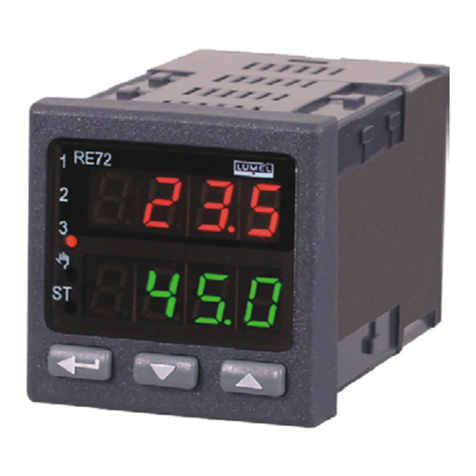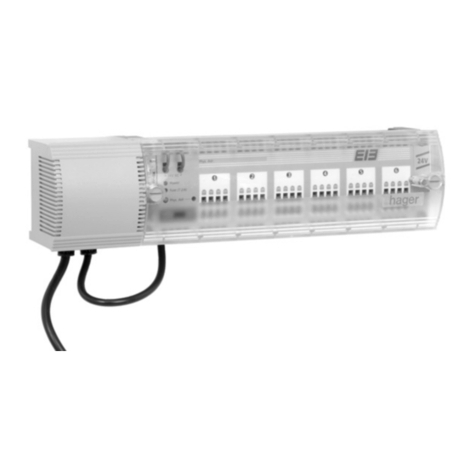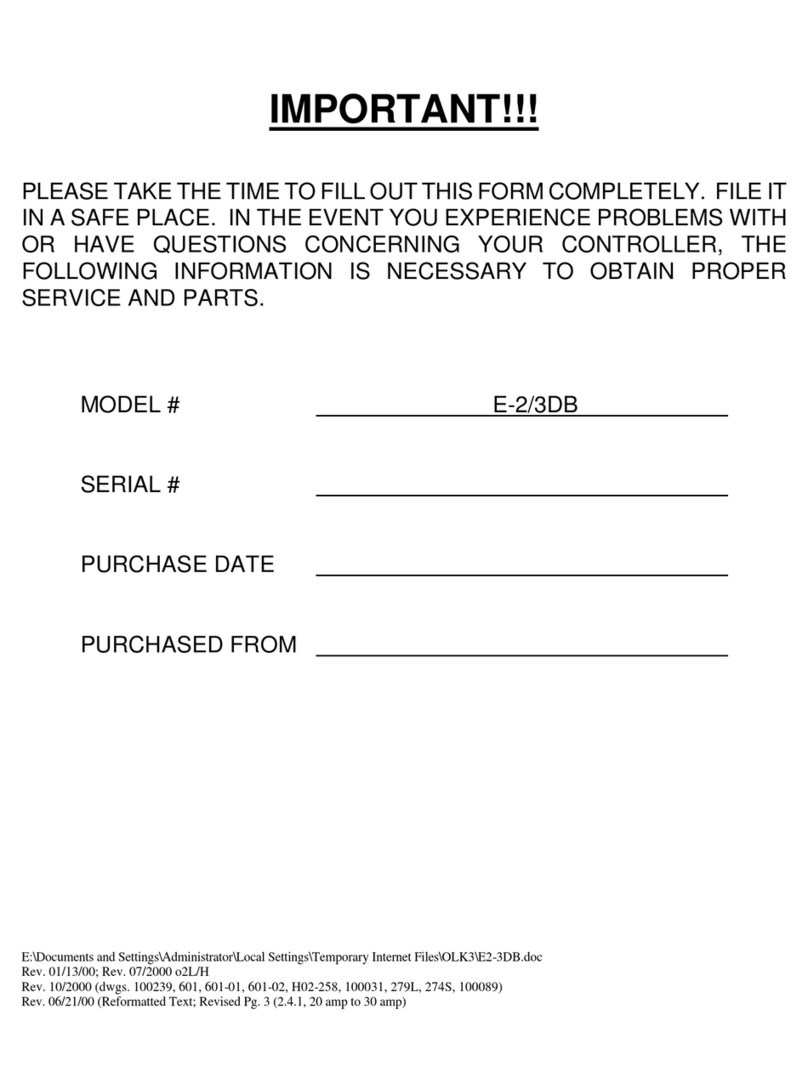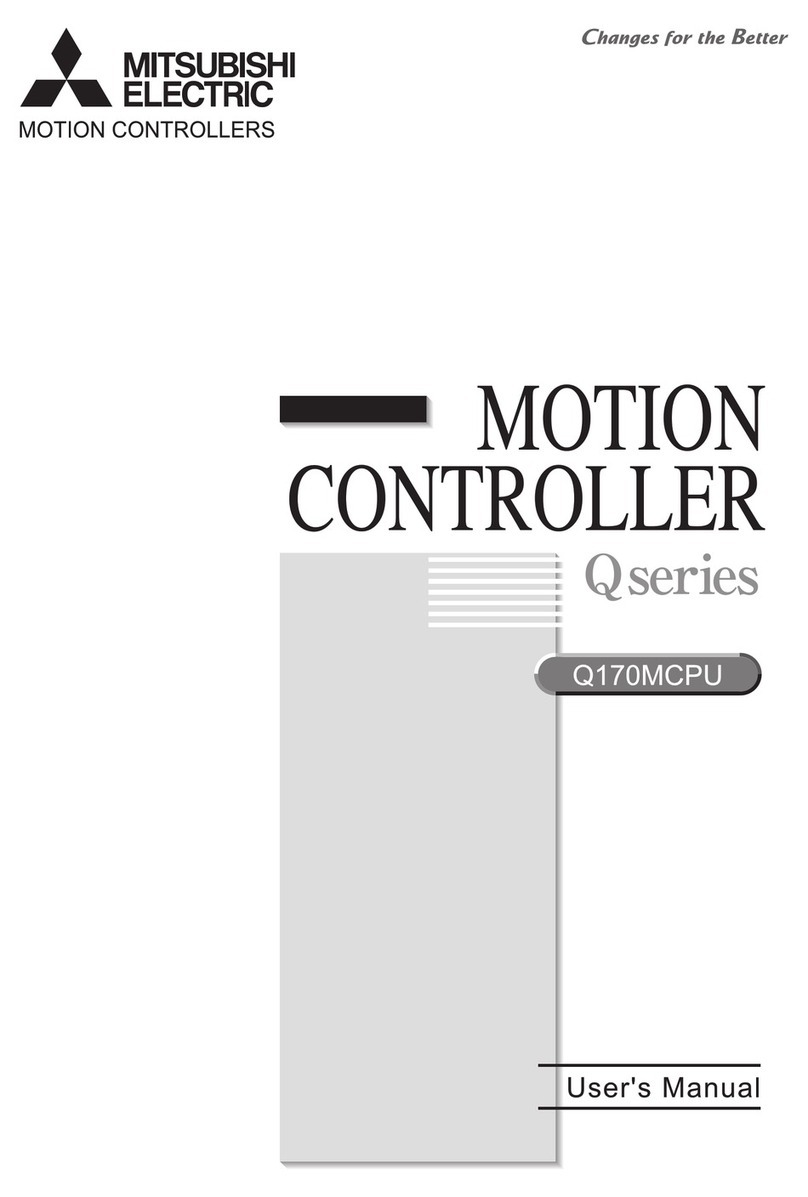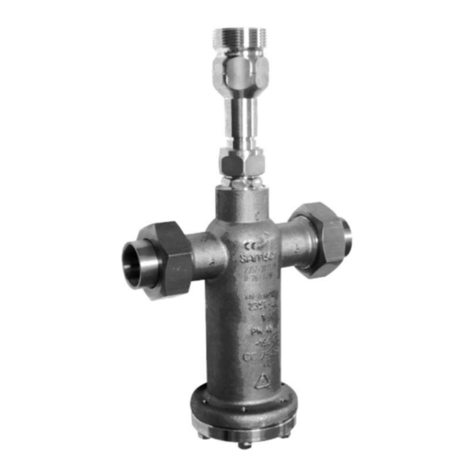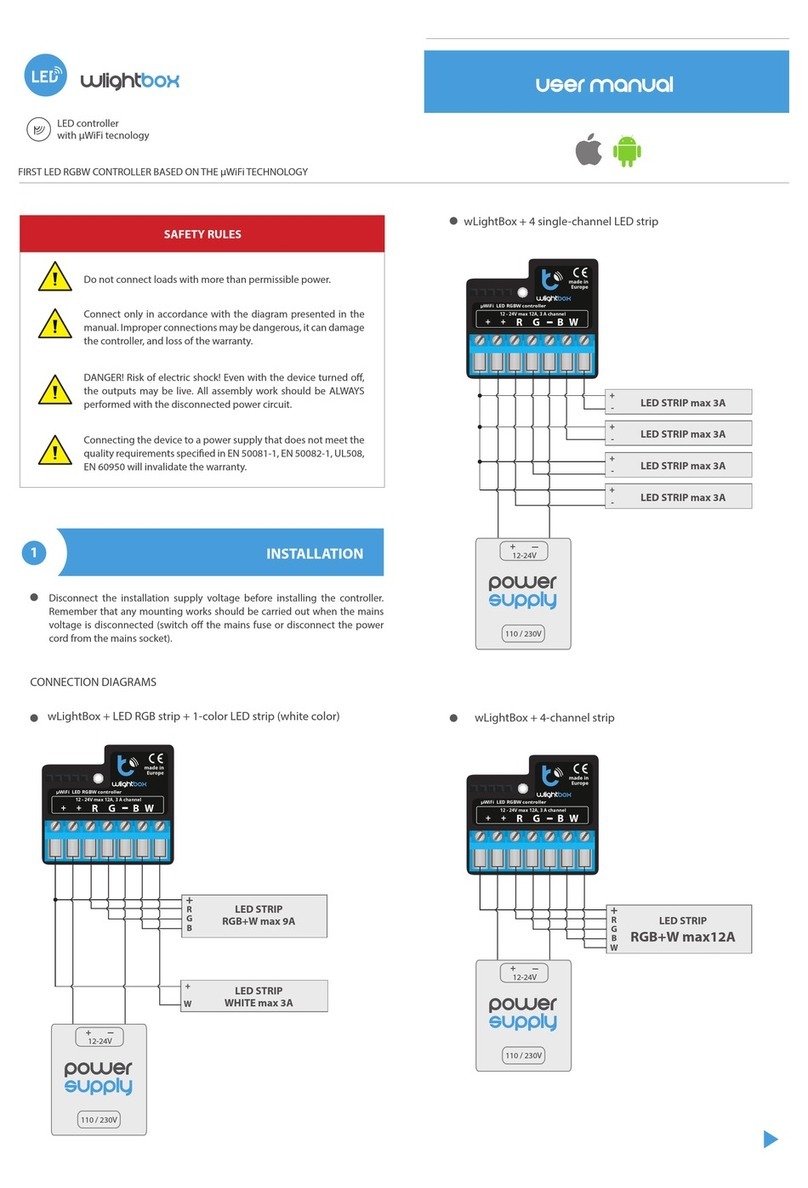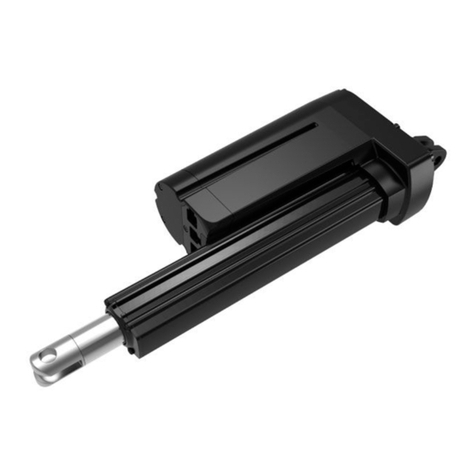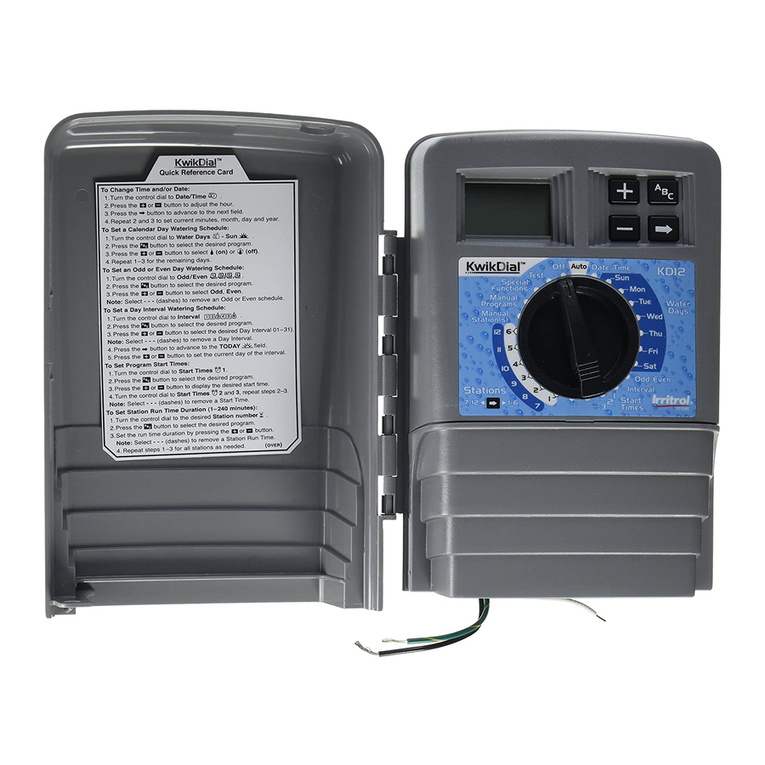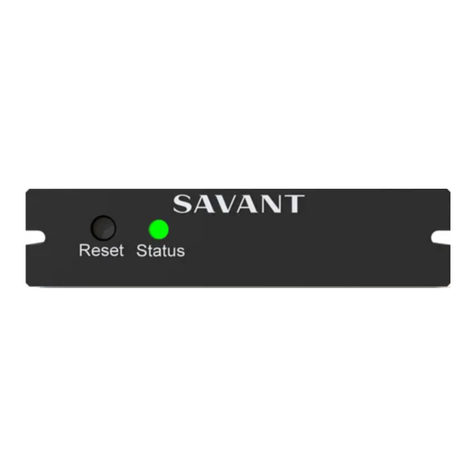Metasys UNT Series User manual

Application Specific Controllers Technical Manual 636.3
UNT Controller Section
Technical Bulletin
Issue Date 0398
© 1998 Johnson Controls, Inc. 1
Code No. LIT-6363081 www.johnsoncontrols.com
Introduction Page 5
•
Description 5
•
Standards Compliance 6
Configuring the Controller 7
•
Using HVAC PRO for Windows Configuration Tool 7
•
Defining a UNT Control Device Object *7
•
Defining a UNT Control Device in Companion Software 9
Installation Procedures 11
•
Design Considerations *11
•
Tools Needed *11
•
Environmental Information 12
•
Mounting the Controller *12
•
Power Line Wiring Transient Noise Precautions *16
•
I/O and Communications Wiring Transient Noise Precautions 18
Wiring Details 19
•
Power Source and Loads *19
•
Wiring Precautions 21
•
Grounding and Isolation UNT110/111, 120/121, 140/141 22
•
Grounding and Isolation UNT110/111, UNT120/121,
and UNT140/141 with Separate Load Transformer *23
Unitary Controller (UNT)
* Indicates those sections where changes have occurred since the last printing.

2 UNT Controller—Unitary Controller (UNT)
•
Terminal Designations
Page
25
•
Analog Inputs *30
•
Binary Inputs 31
•
Binary Outputs (Triac Jumper Information) *31
•
Analog Outputs 32
•
Zone Bus 32
•
Wiring to Unit Mounted Controls--UNT110/111 and UNT120/121 *33
•
Wiring to RLY050/002 Relays *35
•
Wiring Sensors and Actuators *37
Networking the Controller 45
•
N2 Bus Overview *45
•
Installing the N2 Bus *46
•
Zone Bus Communications *48
Application Examples 51
•
Fan Coil Applications 51
•
Unit Vent Applications *53
•
Packaged Rooftop Applications *55
•
Heat Pump Applications 57
Downloading/Commissioning 59
•
Commissioning Procedures 59
•
Via Zone Bus 59
•
Via N2 Bus 59
* Indicates those sections where changes have occurred since the last printing.

UNT Controller—Unitary Controller (UNT) 3
Troubleshooting Page 61
•
Hardware Installation Inspection 61
•
Tools Needed for Troubleshooting 61
•
Installation Checkout *61
•
Troubleshooting the UNT Controller with HVAC PRO for Windows *67
•
Troubleshooting the N2 Bus 69
•
Zone Bus Troubleshooting--HVAC PRO for Windows 70
Ordering Information 71
•
Johnson Controls Code Numbers 71
•
Vendor Code Numbers *73
Specifications 77
Appendix A: Precautions for Rooftop Installations 79
•
Environmental Information 79
•
Installation Requirements *79
•
Electrical Noise in Rooftop Units *81
•
Nuisance Resets in Rooftop Units *82
•
Considerations for Gas Ignition *84
•
Considerations for Specific Rooftop Units *88
Appendix B: UNT100/101 91
•
What’s Different About the UNT100/101 91
•
UNT100/101 Terminal Designations 91
•
Grounding and Isolation UNT100/101 93
•
Binary Inputs *94
•
Binary Outputs 94
* Indicates those sections where changes have occurred since the last printing.

4 UNT Controller—Unitary Controller (UNT)

UNT Controller—Unitary Controller (UNT) 5
Introduction
The Unitary Controller (UNT) is an electronic device for digital control of
packaged air handling units, unit ventilators, fan coils, heat pumps, and
other terminal units serving a single zone or room. It also can be
configured as a generic Input/Output (I/O) device for basic point
monitoring applications when used within a Metasys® Network.
You can easily configure point inputs and outputs, and software features to
control a wide variety of Heating, Ventilation, and Air Conditioning
(HVAC) equipment applications. The UNT may be used as a standalone
controller or connected to the Metasys Network through a Network
Control Module (NCM) or Companion.
When connected to the Metasys Network, the UNT provides all point
control information to the rest of the network. The devices communicate
through an N2 Bus. For a smaller facility, the UNT can function as a
standalone controller. Figure 1 illustrates the UNT.
1 2 3 4 5 6
1 2 3 4 5 67 8
BINARY INANALOG INPUTS BINARY OUTPUTS
DSI
1 2 3 4 5 6
ANALOG INPUTS
COMMON
ANALOG INPUTS
1 2 3 4 5 6
BINARY INPUT
1 2 3 4
TO
ZONE
STAT
+15VDC
REF
N2-
N2+
24VAC
COM
ZBUS
Z BUS
24VAC
+15VDC
BINARY OUTPUT
1 2 3 4 5 6
COMMON
COMMON
7 8
COMMON
COMMON
24VAC
24VAC
TRACS
COMMON
5
unt-110
Figure 1: Unitary Controller (UNT)
You may use the UNT for unit ventilator, rooftop, heat pump, or fan coil
applications, or as a generic I/O multiplexer and I/O sideloop control.
Each has a different sequence of operation, all of which are covered in the
HVAC PRO for Windows User’s Manual (FAN 637.5).
The Unitary Controller is available in different hardware sets to suit
different environmental and application needs. Table 1 lists the common
features of the different hardware sets. Table 2 lists the differences by
model.
Description

6 UNT Controller—Unitary Controller (UNT)
Table 1: Unitary Controller Hardware Characteristics--
Similarities
Characteristic Description
6 Analog Inputs RTD temperature elements (1000 ohm nickel, platinum, or silicon)
Adjustable 0 to 2k ohm setpoint potentiometers
0 to 10 VDC or 0 to 2 VDC transmitters
4 Binary Inputs (4) 24 VAC input only (24 VAC provided)
(1) Momentary pushbutton from Zone Sensor for temporary occupancy mode (BI 5)
BI 4 may be used as an accumulator input for frequencies less than 2 Hz.
N2 Bus Isolated
Zone Bus
(see Table 2) Removable screw terminal block, Light-Emitting Diode (LED) Indication, 8-pin phone jack
on controller
24 VAC Power in
Termination Removable screw terminal block
N2 Terminations Removable screw terminal block
Table 2: Unitary Controller Hardware Characteristics--
Differences
Characteristic UNT110-1 UNT111-1 UNT120-1 UNT121-1 UNT140-1 UNT141-1
Operating
Temperature
Rating
0 to 52°C
(32 to 125°F) 0 to 52°C
(32 to 125°F) -40 to 52°C
(-40 to 125°F) -40 to 52°C
(-40 to 125°F) 0 to 52°C
(32 to 125°F) 0 to 52°C
(32 to 125°F)
Analog Outputs:
0 to 10 VDC
@ 10 mA
None 2 None 2 None 2
Binary Outputs:
24 VAC Triacs @
0.5A or 0.8A if
total power is
limited
Low or High side
common
selectable
868686
Zone Bus (see
Table 1) Additional
6-pin Phone
Jack
Additional
6-pin Phone
Jack
I/O Terminations Quick
Connects
(Spade Lugs)
Quick
Connects
(Spade Lugs)
Quick
Connects
(Spade Lugs)
Quick
Connects
(Spade Lugs)
Fixed Screw
Terminal
Block
Fixed Screw
Terminal
Block
Available
Premounted in
EWC10, with
24 VAC, 50 VA
Transformer
UNT110-101 UNT111-101 UNT140-101 UNT141-101
The UNT complies with the following standards:
●FCC Part 15, Subpart B, Class A
●IEEE 472
●IEEE 587 Category A
●UL 916, UL 864
Standards
Compliance

UNT Controller—Unitary Controller (UNT) 7
Configuring the Controller
All UNTxxx-1 models require HVAC PRO for Windows. HVAC PRO for
Windows also works with previously released UNT models. This software
tool configures, commissions, uploads, and downloads the UNT database.
Refer to the HVAC PRO for Windows User’s Manual (FAN 637.5) for
more information on configuring the UNT.
In a Metasys Network System, enter data into the Attribute menu to define
a UNT device object.
1. Go to the Network Map on the Operator Workstation (OWS).
2. Double-click the system name to which the new UNT object is to be
added.
3. On the Item menu, click New.
4. Select Type/N2 devices in the Item New dialog box.
itemnew
OK
CANCEL
Accumulator
Analog data
Analog input
Analog output digital
Analog output setpoint
Binary data
Binary input
Binary output
MS data
MS input
Type MS output
Control system
DL/LR group
LC group
PID loop
Fire Zone
L2 devices
N2 devices
S2 devices
Card Reader
Hardware system name:
Hardware object name:
Copy of (System\Object):
UNT - Item New
Figure 2: Item New Dialog Box
Note: The Hardware System and Hardware Object text fields are not
used for this object type.
5. Click OK.
Using
HVAC PRO for
Windows
Configuration
Tool
Defining a UNT
Control Device
Object

8 UNT Controller—Unitary Controller (UNT)
6. Highlight UNT in the Add N2 Device dialog box as shown in Figure 3.
n2dvc
2.
&$1&(/
+DUGZDUH $GG 1 'HYLFH
'HYLFH 7\SH
$+8
'
'&0
'5
';
,)&
/&3
817
Figure 3: Add N2 Device Dialog Box
7. Click OK.
8. Complete the attribute fields in the UNT Definition window
(see Figure 4).
)ORRU
6
\
VWHP 1DPH
2E
M
HFW 1DPH
([SDQGHG ,'
1& 1DPH
*UDSKLF 6
\
PERO
2SHUDWLQ
J
,QVWU
7RZHUB ,
H
elp
I
tem
E
dit
V
iew
A
ction
G
o To A
c
cessory
+DUGZDUH
1 7UXQN 1XPEHU
1 'HYLFH $GGUHVV
3ROO 3ULRULW
\
)OD
J
V
$XWR 'LDORXW
1
&RPP 'LVDEOHG 1
+DUGZDUH
1&
%RRNPDUN
windobj
817 'HILQLWLRQ
Figure 4: UNT Control-Device Object Definition Window
Note: Fill in the blank UNT Definition attribute fields as required.
Specify an N2 Device Address from 1 to 255. Default values in the
remaining attribute fields may be accepted or changed.

UNT Controller—Unitary Controller (UNT) 9
Table 3 explains the blank attribute fields. The Operator Workstation
User’s Manual (FAN 634) describes the general procedures for
entering and modifying data.
Table 3: Blank UNT Object Attributes
Attribute Description Entry Values . . .
Object Name Identifies the object
(i.e., UNT1). The object
name cannot be duplicated
in the system.
1 to 8 alphanumeric
characters
Expanded ID Further identifies the object
(i.e., Garage Level Heater) 0 to 24 alphanumeric
characters
(optional)
9. On the Item menu, select Save to save the new UNT object and add
the object to the NCM database.
10. Upload the NCM to make an archive copy of the new object. Refer to
the Operator Workstation User’s Manual (FAN 634), Uploading from
the NCM.
To define a UNT control device in Companion, refer to the Metasys
Companion Technical Manual (FAN 628.1).
Defining a UNT
Control Device
in Companion
Software

10 UNT Controller—Unitary Controller (UNT)

UNT Controller—Unitary Controller (UNT) 11
Installation Procedures
Instructions for installing the UNT and its accessories are detailed in this
section. The number and types of components (sensors and actuators) used
with the UNT will vary according to application. Analyze the proposed
installation for logical locations to place these devices and draw an
inventory based on that study. Information on available accessory devices
is in the Ordering Information section of this technical bulletin.
Decide how close the UNT can be to the air handling equipment while still
allowing adequate room for installation and maintenance accessibility.
Also take into consideration any existing power sources or communication
lines. The UNT must be secured to a solid wall and not to any vibrating
surface.
IMPORTANT: Do not mount the UNT near high voltage or
electrically noisy devices. Refer to Appendix A:
Precautions for Rooftop Installations.
For a typical installation, you need the following:
•HVAC PRO for Windows software, current release
•IBM® PC-compatible laptop computer
•Microsoft® Windows® (3.xx or 95)
•AS-CBLPRO-2 (for Zone Bus downloading, uploading, and
commissioning) or MM-CVT101-0 (for N2 downloading, uploading,
and commissioning)
•two screwdrivers (1/8 in. and 1/4 in. flat-blade)
•drill
•(optional) AS-ZTU100-1 (Zone Terminal unit)
Note: The AS-ZTU100-1supports both AS-UNTxxx-0 and
AS-UNTxxx-1models. The AS-ZTU100-0supports
AS-UNTxxx-0models only.
Design
Considerations
Tools Needed

12 UNT Controller—Unitary Controller (UNT)
The installation site of the UNT must meet the following environmental
standards:
•The atmosphere must be free of explosive vapors and escaping gases.
•The atmosphere must be free of exposure to corrosive chemical or salt
vapors that might damage electrical equipment.
•For UNT100/101, UNT110/111, and UNT140/141 series
controllers, the temperature must be maintained between
0 and 52°C (32 and 125°F) with relative humidity (non-condensing)
maintained between 10 and 90 percent.
•For UNT120/121 series controllers used with outdoor rooftop
applications, the temperature must be maintained between
-40 and 52°C (-40 and 125°F) with relative humidity maintained
between 10 and 90 percent. Some intermittent condensation is
tolerable. This operating temperature range is possible in the
UNT120/121 series controllers due to the heater, coated circuit board,
and BZ-1000-7 size enclosure.
The UNT is commonly packaged either in an enclosure provided by the
installation contractor, or in an AS-ENC100-0 or EN-EWC10-0 enclosure.
The UNT140/141-101 and UNT110/111-101 come mounted in an EWC10
enclosure with a 50 VA transformer. The controller requires a flat
mounting surface area to match its dimensions.
The UNT controller has the following dimensions:
•165 x 163 x 56 mm (6.5 x 6.4 x 2.2 in.) H x W x D without enclosure
•173 x 185 x 119 mm (6.8 x 7.3 x 4.7 in.) H x W x D with the
AS-ENC100-0 enclosure
•229 x 406 x 191 mm (9.0 x 16.0 x 7.5 in.) H x W x D with the
EWC10 or UNTxxx-101 version
Allow enough room to install the enclosure and conduit for wiring
terminations to the controller.
Environmental
Information
Mounting the
Controller
Physical
Dimensions

UNT Controller—Unitary Controller (UNT) 13
The UNT120/121 low temperature rated controller must be installed in an
enclosure as suggested below, unless it is mounted within the enclosed,
low voltage electrical compartment of the mechanical unit being
controlled. The BZ-1000-7 enclosure is the common package for a
UNT120/121 mounted in the air stream or in the mixed air chamber of a
mechanical unit.
The BZ-1000-7 enclosure is the recommended size for optimum
performance of the UNT120/121. Venting the BZ-1000 enclosure
(possibly removing unused knockouts), using the AS-ENC100-0 or
EN-EWC10-0, or using a larger enclosure is recommended for
environments that regularly exceed 32°C (95°F).
The UNT120/121 series controller has the following dimensions:
•165 x 163 x 56 mm (6.5 x 6.4 x 2.2 in.) H x W x D without enclosure
•259 x 249 x 76 mm (10.2 x 9.8 x 3 in.) H x W x D with the
BZ-1000-7 enclosure
•229 x 406 x 191 mm (9.0 x 16.0 x 7.5 in.) H x W x D with the
EWC10 or UNTxxx-101 version
Before installation, position the controller and enclosure on the proposed
mounting surface to ensure that the calculated mounting area is correct.
Precise distance measurements can be made between controller terminals
and sensor/actuator mounting points on the air handling equipment if the
equipment is in place. Confirm electrical power source and conduit
requirements at this time.
Note: You can install a UNT100/101, UNT110/111, or UNT140/141
series controller in a control panel, or in an AS-ENC100-0 or
EN-EWC10-0 enclosure. You must enclose the UNT120/121
series controller in a BZ-1000-7 enclosure or another enclosure of
comparable dimensions.
Mount the UNT in a convenient location using the predrilled mounting
holes. The controller must be mounted vertically on a wall or panel where
it can be easily wired through the enclosure cover. This also applies to
remote location packages.
Enclosures for
Mounting a
UNT 120/121
Positioning

14 UNT Controller—Unitary Controller (UNT)
4
42
Top / Bottom
Side
UNT Enclosure (Cover)
Do not use this knockout.
Otherwise, controller will
be in the way of wiring.
untencl
5
3
UNT
1
Figure 5: Installing the UNT Controller in ENC100 Enclosure Kit
To install the UNT in an ENC100 enclosure kit (see Figure 5), use the
following procedure:
1. Use a flat-blade screwdriver and pliers to remove the necessary wire
passage knockouts ①.
2. Position the enclosure firmly against the mounting surface and mount
it with the appropriate screws.
3. Secure the UNT ②inside the enclosure kit ③, using the
three mounting tabs ④on the sides of the controller board base.
4. Attach the enclosure cover ⑤after installing the wiring.
Installing the UNT
in a ENC100
Enclosure Kit

UNT Controller—Unitary Controller (UNT) 15
The UNT can be directly mounted into an EWC10 enclosure. You may
also purchase the UNT110/111 or UNT140/141 premounted in an EWC10
enclosure with a 24 VAC 50 VA transformer. When the UNT is
premounted in an EWC10 enclosure with a 50 VA transformer, the model
number will be UNTxxx-101 rather than UNTxxx-1. For instructions on
mounting the enclosure to a wall, see the Application Specific Controllers
Technical Manual (FAN 636.3), the Accessories tab, the Universal
Packaging Module Technical Bulletin (LIT-6363070).
untpwer2
Low Voltage
Wiring Trough
Figure 6: UNT Premounted in EWC10, with
50 VA Transformer (UNTxxx-101)
To mount the UNT in the EWC10, use the following procedure:
1. Position the terminals of the UNT toward the low voltage wiring
trough located on the left side of the enclosure (see Figure 6).
2. Align the three mounting holes in the base of the controller with the
holes in the backbone of the enclosure. On the side with
four mounting holes, use the two outside holes for mounting in the
EWC.
3. Secure the controller with three No. 8 x 1 in. screws. For best results,
use a plastite type thread. A thread forming or sheet metal type thread
may also be used.
UNTxxx-101
Mounting a UNT
in a EWC10

16 UNT Controller—Unitary Controller (UNT)
The standard UNT, when powered by any typical separate isolation
transformer or stepdown transformer, operates reliably in an electrical
environment defined as Location Category A by the IEEE 587 Standard;
that is, when installed more than 30 feet from electrical distribution
panels or major bus and feeder systems in industrial plants.
IEEE 587 Location Category A power line surge/noise level is specified at
6 kV, 500 A (Normal Mode Ringwave).
The UNT exceeds the Category A specification by meeting these surge
levels as well:
IEEE-587 style Common Mode Pulse 3 kV
IEEE-587 style Normal Mode Pulse 1.5 kV
IEEE-472 style Common Mode Ringwave 1.5 kV
IEEE-472 style Normal Mode Ringwave 500 V
When the controller is installed within 9 m (30 ft) of electrical distribution
panels or major bus and feeder systems in industrial plants, you must take
further precautions to prevent unwanted binary output cycling, resetting,
or other possible controller malfunctions. This electrical environment is
defined as Location Category B by the IEEE 587 Standard.
You can use the following method to prevent electrical noise from
adversely affecting the controller:
•Connect an MOV (Metal Oxide Varistor) across the UNT supply
transformer primary. The MOV must be rated appropriately for the
line voltage. Use the list in Table 4 to select the correct MOV sold
through your electronics parts distributor.
The UNT meets the following power line surge/noise standards when you
correctly apply the MOV as described.
IEEE-587 Common Mode Pulse 1.5 kV
Normal Mode Pulse 6 kV
Normal Mode Ringwave 6 kV
IEEE-472 Common Mode Ringwave 1.5 kV
Normal Mode Ringwave 500 V
Note: The 50 VA split bobbin transformer in the EWC15 or -101 model
UNT provides additional surge/noise immunity.
For more information, refer to Appendix A: Precautions for Rooftop
Installations in this technical bulletin.
Power Line
Wiring
Transient Noise
Precautions
Surge Levels

UNT Controller—Unitary Controller (UNT) 17
Table 4: MOV Selection Table
Power Transformer Primary Voltage
120 VAC 208 to 240 VAC 277 VAC 347 VAC
Minimum
Continuous
Voltage Rating
130 to 135 VRMS 250 to 280 VRMS
Only 250V types listed 300 to 320 VRMS 385 VRMS
Minimum Energy
Rating 30 Joules 55 Joules 80 Joules 85 Joules
Minimum Peak
Current
(8 x 20 micro
second pulse)
4,000 Amperes 4,000 Amperes 4,000 Amperes 4,000 Amperes
UL Recognized Required Required Required Required
Harris V130LA10A
V130LA20A*
V130LA20B*
V250LA20A
V250LA40A*
V250LA40B*
None None
Iskra V130K14
V130K20* V250K14
V250K20* V300K14
V300K20* V385K14
V385K20*
Malda D6321ZOV131RA15*
D6521ZOV131RA20*
D6921ZOV131RA09
D6321ZOV251RA90*
D6521ZOV251RA130*
D6921ZOV251RA72
D6321ZOV301RA105*
D6521ZOV301RA150*
D6921ZOV301RA80
None
MalloryVSAC14DK201U
VSAC20DK201U* VSAC14DK391U
VSAC20DK391U* VSAC14DK471U
VSAC20DK471U* VSAC14DK621U
VSAC20DK621U*
Marcon TNR15G211KM
TNR23G201KM*
TNR23G211KM*
TNR15G391KM
TNR23G391JM*
TNR23G391KM*
TNR15G471K
TNR23G471K* None
Oneida(CKE) OZ130LA10A
OZ130LA20A*
OZ130LA20B*
OZ21L221
0216NR14-3
0216NR20-4*
OZ250LA20A
OZ250LA40A*
OZ250LA40B*
OZ21L471 None
Panasonic ERZ-C14DK201U
ERZ-C20DK201U* ERZ-C14DK391U
ERZ-C20DK391U* ERZ-C14DK471U
ERZ-C20DK471U* ERZ-C14DK621U
ERZ-C20DK621U*
Phillips 2322-595-51316 2322-595-52516 2322-595-53016 2322-595-53816
Siemens S14K130
S20K130* S14K250
S20K250* S14K300
S20K300* S14K385
S20K385*
Stetron 0216NR14-3
0216NR20-4*
0216NR20DB*
0390NR14-3
0390NR20-4*
0416NR14-3
0416NR20-4*
0620NR14-3
0620NR20-4* 0620NR14-3
0620NR20-4*
Thomson VE17M00131K
VD24M00131K VE17M00251K
VD24M00251K VE17M00301K
VD24M00301K None
* Indicates the preferred model if several are listed.

18 UNT Controller—Unitary Controller (UNT)
The I/O wiring and N2 Bus must be “clean,” without electrical noise
transients from nearby lighting, heavy equipment switching, or inductive
loads being driven.
For the N2 Bus, the Transient Eliminator, model TE/JC04C12, made by
Advanced Protection Technologies (APT) is recommended. Refer to the
Metasys Network Technical Manual (FAN 636), the N2 Communications
Bus Technical Bulletin (LIT-636018), for more information.
I/O and
Communications
Wiring
Transient Noise
Precautions

UNT Controller—Unitary Controller (UNT) 19
Wiring Details
This section details the special precautions and grounding procedures you
must observe when installing the UNT.
!
WARNING: Possible Equipment Damage or Electrical Shock.
To avoid damaging equipment or suffering electrical
shock, ensure that all power supplies to the system
have been disconnected prior to wiring installation.
The Complementary Metal Oxide Semiconductor
(CMOS) circuits used in the controller are static
sensitive. Use static protection (anti-static) mats
and/or grounding straps when working on or near
internal circuitry.
The power transformer used must comply with:
•CSA 22.2 No. 205
•NEMA ICS 2, Part 2, 230
The power to each UNT must be limited to 3 amperes or less. However, if
you use one low voltage power trunk to power multiple controllers,
follow these precautions:
•Ensure that polarity is maintained at each 24 VAC connection.
•Enclose 24 VAC power trunks with greater than 4 amperes (100 VA)
in conduit as required by the National Electric Code (NEC).
•Do not share a UNT’s power transformer with a Companion Panel or
any other device with a full-wave rectifier in its power supply. (UNTs
use “half-wave” rectification. Half-wave circuitry and full-wave
circuitry must not share the same transformer.)
•Consider all the actual loads as well as the basic load of the controller
when determining the system load.
Notes: Some local electrical codes require that the secondary common of
the stepdown transformer be connected to earth ground (typically
on units which are powered by greater than 150 VAC).
The M100 draws 20 VA if using common power for the controller
and the M100 actuator. It is recommended that each M100 use its
own 24 VAC isolation transformer.
Power Source
and Loads

20 UNT Controller—Unitary Controller (UNT)
IMPORTANT: Any individual binary output (triac) can drive up to
800 mA when you limit the total 24 VAC power
draw. You must limit the power draw of a controller
and its load to avoid heat dissipation problems.
The total 24 VAC power draw of a UNT installed in
an ENC100 or similar size box must be limited to a
maximum of 40 VA.
The total 24 VAC power draw of a UNT mounted in
an open air environment must be limited to a
maximum of 75 VA.
Tables 5 and 6 will assist you in determining the total 24 VAC power
draw of your system.
Table 5: UNT Power and Load Specifications
System Loads Power Draw
UNT with Sensors/Transmitters 10 VA (400 mA)
25 VA for UNT120/121 (due to heater)
BO Load
Relay, Contactor, Solenoid, Incremental Actuator*
Maximum allowable load for any individual binary
output (triac) is 19 VA** (800 mA at 24 VAC).
Minimum required load for each binary output
(triac) used is 1.2 VA (50 mA at 24 VAC).
Relay loads less than 50 mA may cause triac/relay
chattering. If necessary, use a 1k ohm, 2 watt
resistor across the relay coil.
Triac BOs cannot drive loads which use DC
currents, such as a device which has a full-wave
rectifier. Triacs can drive only AC resistive or
inductive loads, i.e., AC relays, contactors, and
actuator motors. If the driving of a DC device is
required, a pilot relay must be used to isolate the
triac.
Refer to specific product
documentation.
AO Load
Actuator
Maximum allowable load for each AO is 10 mA
@ 10 VDC with a minimum load resistance of
1,000 ohms.
See Table 6.
Zone Terminal or CBLPRO 1.2 VA (50 mA)
* Actuator VA requirements found in Table 6.
**With total controller power limited as described previously.
This manual suits for next models
6
Table of contents
Other Metasys Controllers manuals
